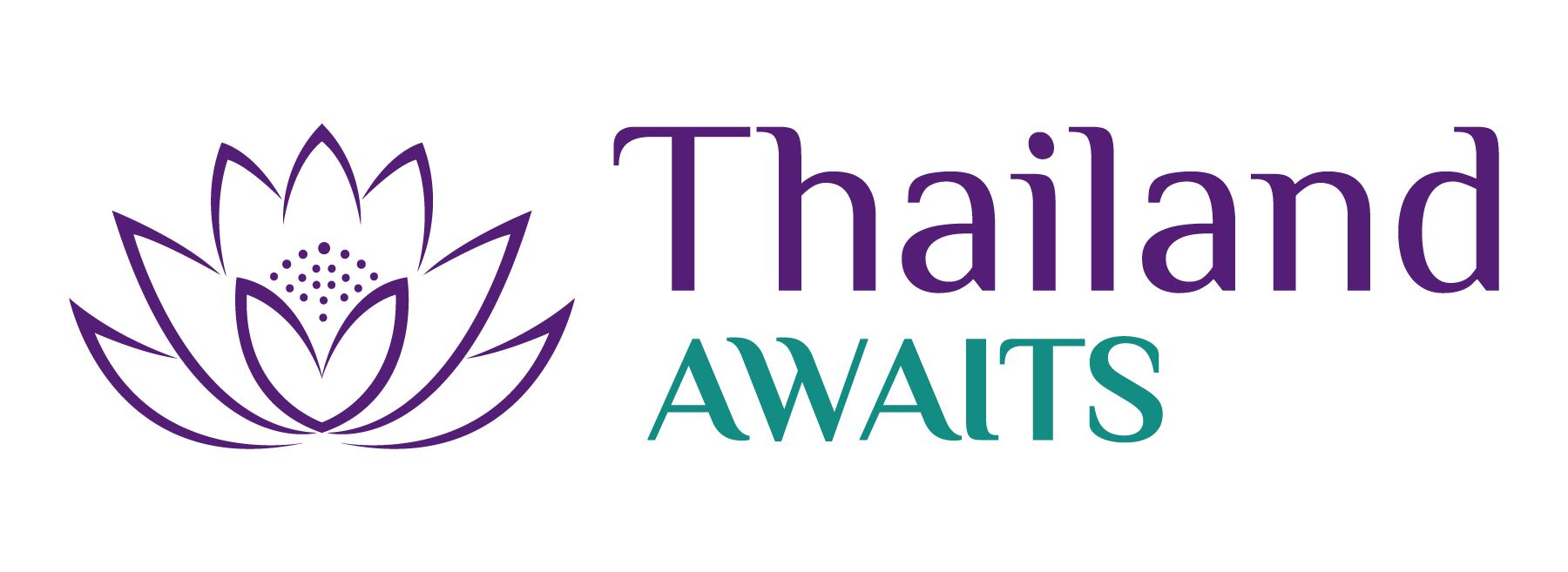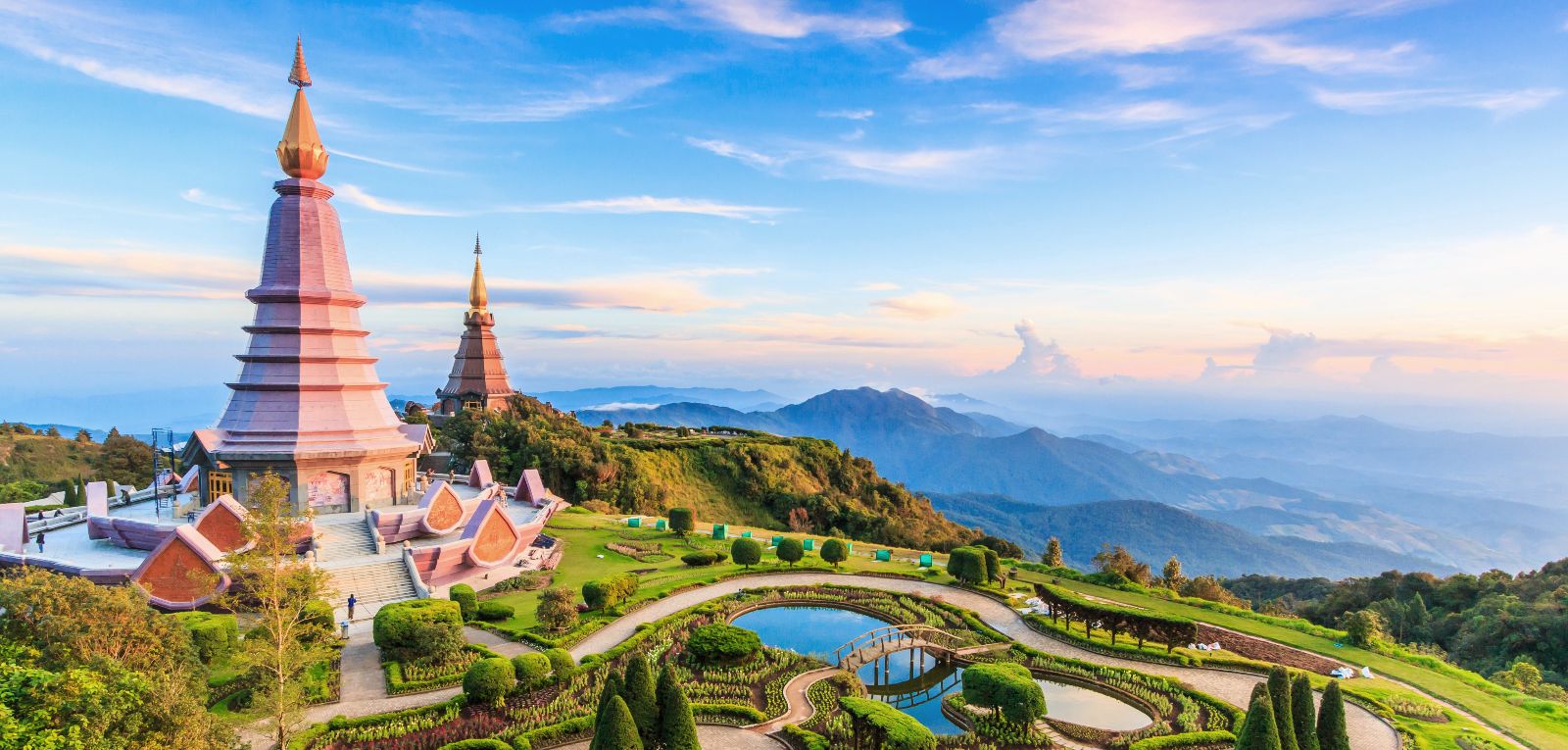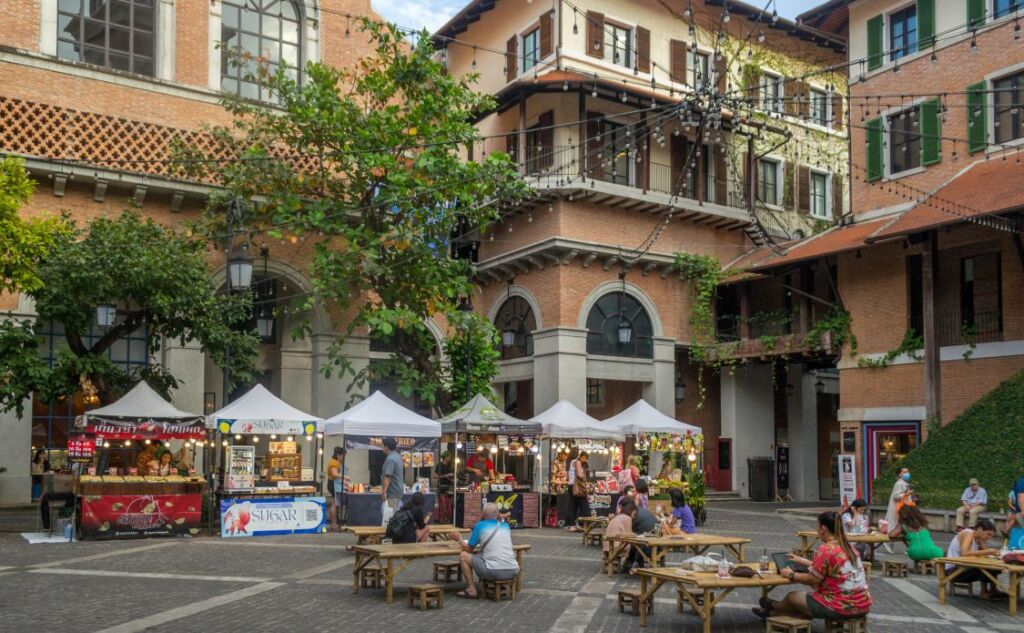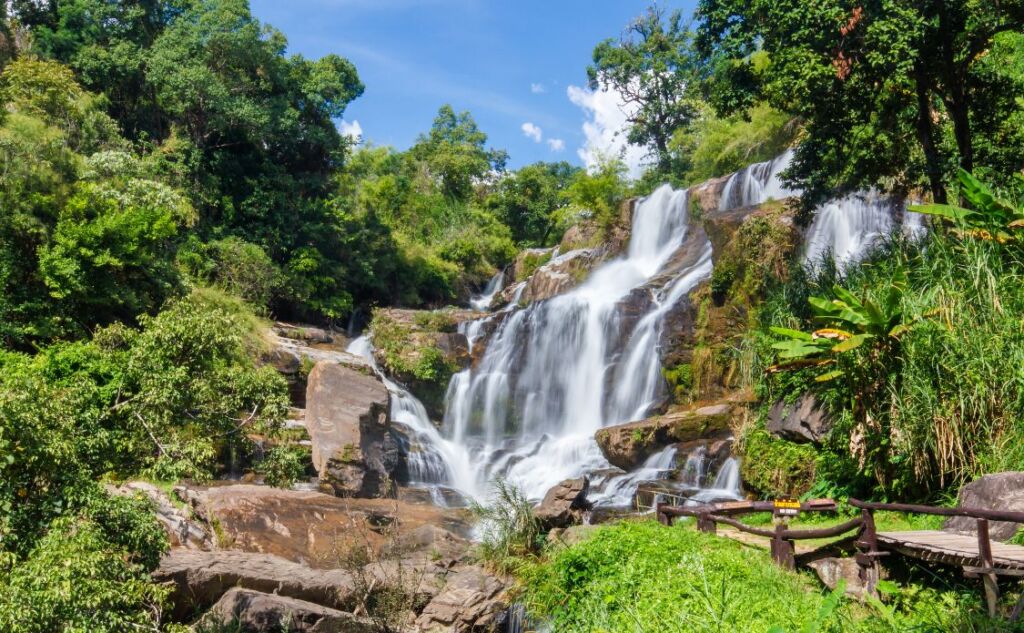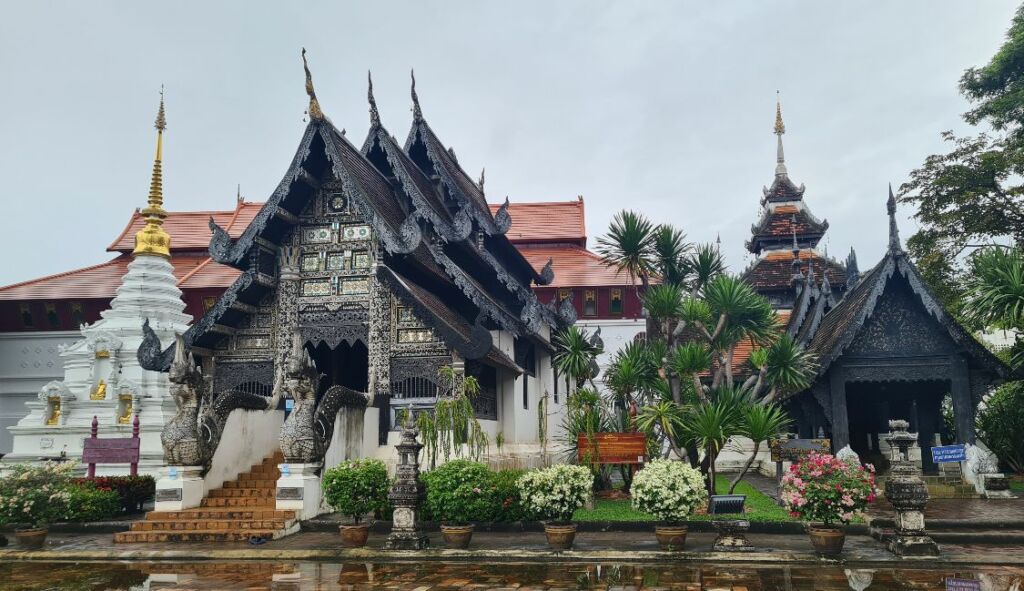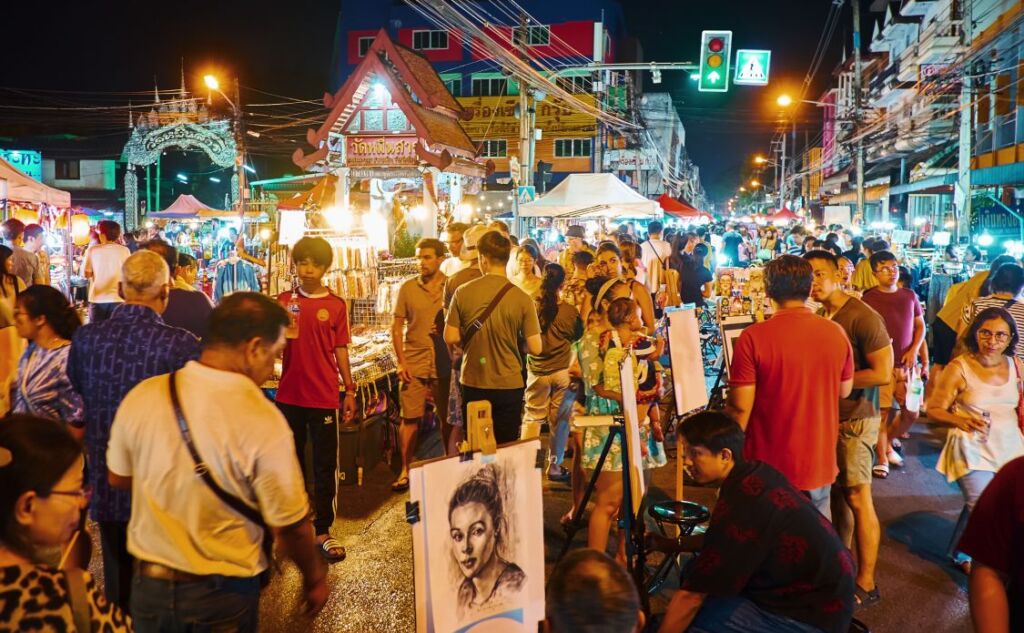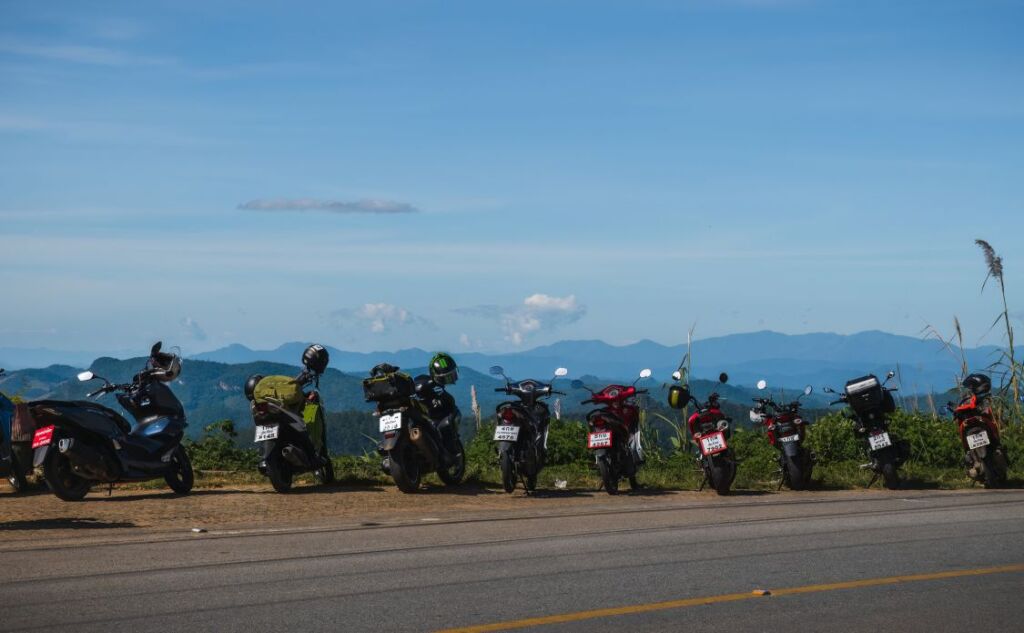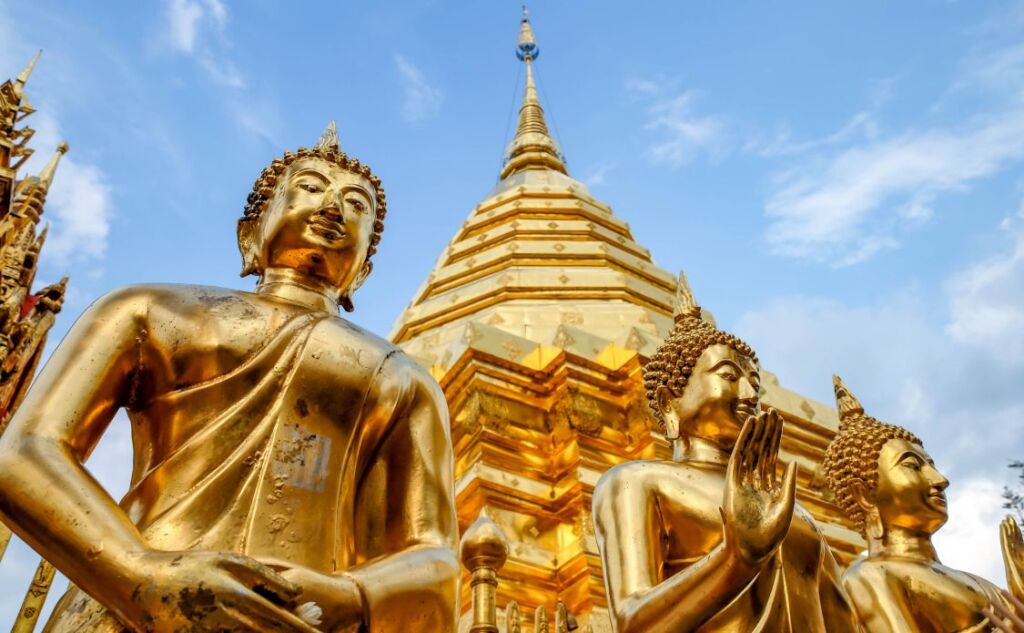Chiang Mai Travel Guide
You’ve probably been told you should include Chiang Mai in your Thailand itinerary, but maybe you’re not sure why. This guide will help you decide when to visit, what to do, and how to get the best out of your time in northern Thailand’s cultural capital.
This page contains affiliate links. Please see our disclosure policy for more details.
Why Visit Chiang Mai?
Chiang Mai is an ancient city in the mountains of northern Thailand. Founded in 1206, it was the capital of the independent Lanna Kingdom until 1558, and much of that heritage remains. The Old City is still surrounded by a moat and the remnants of fortified walls, giving a sense of its past importance as both a cultural and religious centre.
The appeal today lies in its balance: historic temples and traditional markets sit alongside lively neighbourhoods, mountain escapes, and a food culture that rivals anywhere in the country. With national parks, waterfalls, and craft villages nearby, it’s also one of the best bases for exploring northern Thailand.
Things to Do in Chiang Mai
Chiang Mai has a slower pace than Bangkok, but there’s no shortage of experiences:
- Elephant Sanctuaries – Choose carefully and only visit ethical sanctuaries where elephants are not ridden or made to perform.
- Cooking Classes – Popular half-day or full-day courses introduce you to northern Thai dishes like khao soi and sai ua. Most include a trip to a local market.
- Handicraft Villages – Baan Tawai specialises in woodcarving, while San Kamphaeng is known for textiles and ceramics.
- Coffee Culture – The cooler climate of the northern highlands produces excellent beans. The city is packed with independent cafés serving locally grown coffee.
- Markets – The Saturday and Sunday Walking Streets are Chiang Mai’s biggest events, while the Night Bazaar runs nightly with food, crafts, and live music.
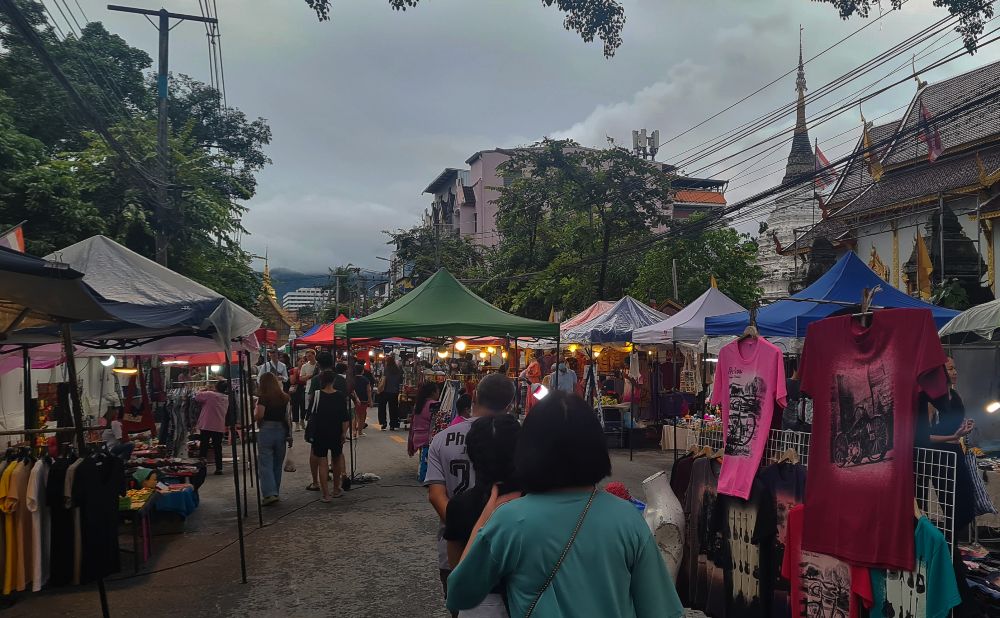
Must-See Temples
Chiang Mai has more than 300 temples, but these four are the ones not to miss:
- Wat Phra That Doi Suthep – The golden temple on the mountain, with sweeping views over the city. Go early morning or at sunset for a quieter visit.
- Wat Phra Singh – Famous for its Lanna-style architecture and one of the city’s most revered Buddha images.
- Wat Chedi Luang – A dramatic ruined chedi in the heart of the Old City, also home to evening monk chats.
- Wat Sri Suphan – The “Silver Temple” its main ordination hall entirely covered in hand-crafted silver panels.
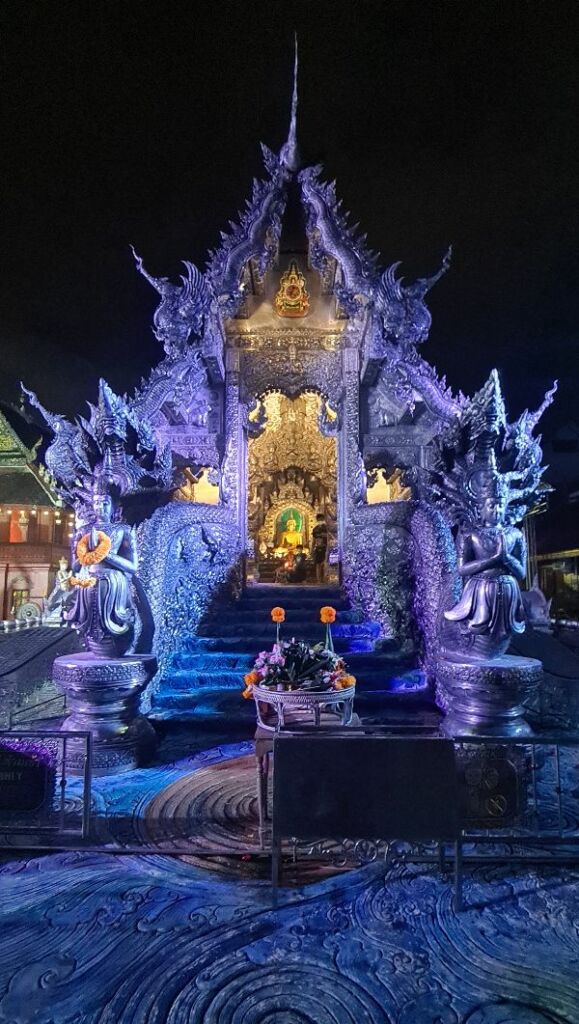
Nature and Day Trips
Chiang Mai is surrounded by more than a dozen national parks.
- Doi Suthep–Pui National Park – Just 20 km from the city, home to Wat Phra That Doi Suthep and the Hmong Doi Pui village.
- Doi Inthanon National Park – About 95 km away, this is Thailand’s highest peak (2,585 metres) and offers waterfalls, hiking trails, and mountain views.
- Day Trips – Chiang Rai (White Temple, Blue Temple, and Black House), Lampang (horse-drawn carriages and temples), or Pai (a mountain town with hot springs and a relaxed vibe).
Food and Nightlife
Chiang Mai is one of the best cities in Thailand for food lovers. Khao soi is the city’s signature dish—a rich coconut curry noodle soup topped with crispy noodles. Every local has a favourite spot, ask your hotel staff or driver for tips.
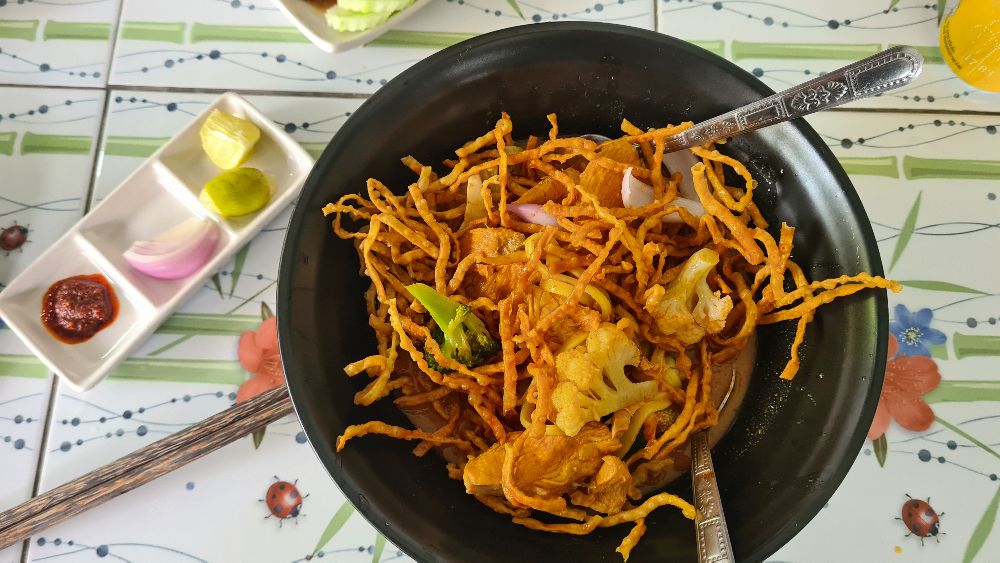
- Street Food – Chang Phuak Gate market is legendary, especially for the “Cowboy Hat Lady” braised pork leg rice.
- Vegetarian & Vegan – The city has a strong vegetarian scene, with plenty of cafés and restaurants catering to plant-based diets.
- Nightlife – Think bars with live music, craft beer, and relaxed bars rather than big clubs. Nimmanhaemin is the main nightlife area.
Where to Stay
Choosing the right neighbourhood makes a big difference to your stay. Here are the main areas visitors like, with hotel picks for different budgets.
Old City
The Old City is inside the historic walls and moat, and it’s the best base if you want to be within walking distance of temples, markets, and museums.
- Budget – Viang Thapae Resort – We stayed here in a pool access room and loved it. Comfortable mid-range option just outside the eastern Tha Phae Gate.
- Mid-range – Phra Singh Village – Modern design with a central location.
- Luxury – Meliá Chiang Mai – A five-star hotel perched by the Ping River near the daily Night Bazaar. It offers two outdoor pools (including a kids’ pool), spa and gym facilities, and a rooftop terrace. A great family option.
- Luxury –Tamarind Village – Boutique hotel in traditional Lanna style on the Sunday Walking Street
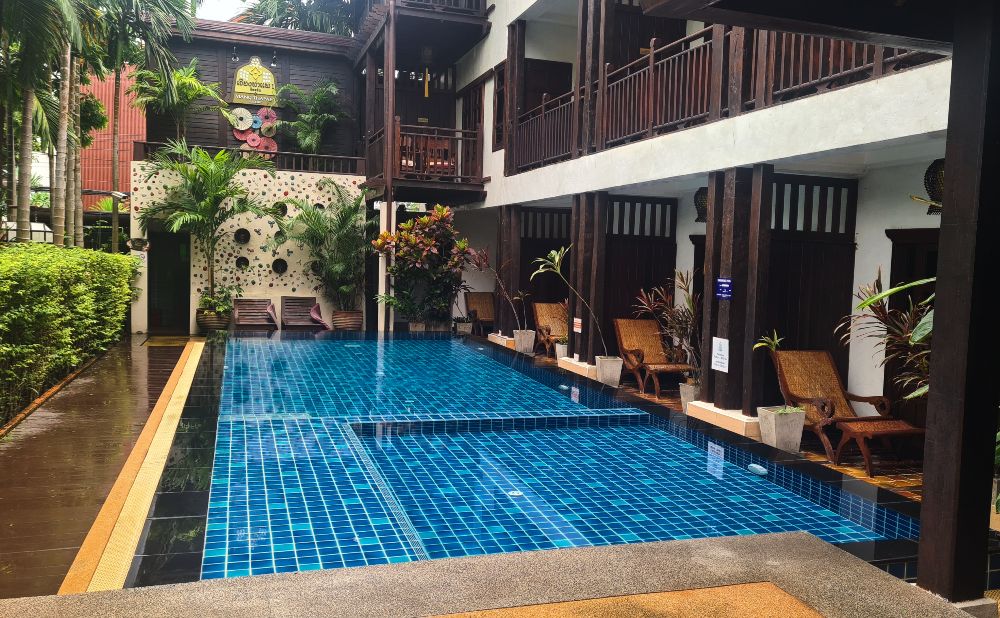
Nimmanhaemin (Nimman)
Nimman is Chiang Mai’s trendy district, full of cafés, coworking spaces, and nightlife. It’s popular with digital nomads and younger travellers who like a more modern vibe.
- Budget: The Empire Nimman – Modern hotel with comfortable rooms, fitness centre, and excellent breakfast, prime position on Nimmanhemin Road.
- Mid-range: Art Mai Gallery Nimman Hotel – Have stayed here and loved the location and the room. Themed around different art styles, the property is very well maintained.
- Luxury: U Nimman Chiang Mai – Stylish hotel with a rooftop pool and spacious rooms.
Riverside
If you’d like a quieter stay, the riverside area has a more relaxed pace, with boutique resorts and leafy surroundings while still being close enough to reach the Old City by tuk-tuk or Grab.
- Luxury: Anantara Chiang Mai – Luxury riverside resort with excellent service.
- Mid-range: Rimping Village – Family-run, great value, and highly rated for its welcoming feel.
Getting to Chiang Mai
Chiang Mai International Airport (CNX) is just 5 km from the city centre. A taxi costs around 160 baht, or you can take the public bus for about 40 baht. The airport has direct flights from Bangkok, Phuket, Koh Samui, and Krabi, as well as international connections to Singapore, Kuala Lumpur, Seoul, and Hong Kong.
If you prefer to travel overland, the overnight train from Bangkok takes 11–14 hours. With flight times of just over an hour and low-cost carriers often matching train fares, the train is more for the experience than the savings.
Driving is another option—roads in northern Thailand are in good condition if you’re confident behind the wheel and carry an international licence. Car hire is available at the airport.
Getting Around Chiang Mai
The Old City is walkable, but for longer trips you’ll use:
- Songthaews – Shared red pickup trucks, cheap and widely used for getting around town and to nearby sites.
- Tuk-tuks – Handy for short rides; agree on the price before you get in.
- Grab app – Reliable and air-conditioned.
When to Visit Chiang Mai
Cool Season (Nov–Jan) – The best time to visit Chiang Mai is during the cool season, from November to January, when the weather is most pleasant. During this period, temperatures range from 15°C to 30°C (59°F to 86°F), ideal for exploring and enjoying outdoor activities. Rainfall is minimal, making it perfect for sightseeing.
Hot Season (Feb–May) – The months to avoid are February to May, which are extremely hot, with temperatures often exceeding 35°C (95°F). This period is also known as burning season when farmers from across northern Thailand, Cambodia, Laos and Vietnam burn their field before they plant new crops. Pollution levels at this time of year are some of the worst in the world.
Rainy Season (Jun–Oct) – The last season, known as the wet, green or rainy season lasts from June to October. While heavy downpours can disrupt travel plans, this is not a terrible time to be in Chiang Mai. We visited in late September 2022 for a month and found that while it did rain for part of most days it was still a pleasant stay. The crowds were low and prices were appealing!
Average Temperatures and Rainfall in Chiang Mai
| Month | Avg. Temperature (°C) | Avg. Temperature (°F) | Avg. Rainfall (mm) |
|---|---|---|---|
| Jan. | 19 – 29 | 66 – 84 | 5 |
| Feb. | 21 – 32 | 70 – 90 | 5 |
| March | 23 – 34 | 73 – 93 | 10 |
| April | 26 – 36 | 79 – 97 | 50 |
| May | 25 – 34 | 77 – 93 | 160 |
| June | 24 – 33 | 75 – 91 | 125 |
| July | 24 – 32 | 75 – 90 | 140 |
| Aug. | 24 – 32 | 75 – 90 | 220 |
| Sept. | 24 – 31 | 75 – 88 | 240 |
| Oct. | 23 – 31 | 73 – 88 | 125 |
| Nov. | 22 – 29 | 72 – 84 | 60 |
| Dec. | 19 – 28 | 66 – 82 | 10 |
The average time travellers spend in Chiang Mai is between three and five days, and you will find the must see temples in Chiang Mai here.
Local Tips
- The Sunday Walking Street is the busiest and best market—arrive early to avoid the heaviest crowds.
- Visit Doi Suthep at sunrise or sunset to avoid tour groups.
- Grab app is the easiest way to get around if you don’t want to negotiate prices.
- Masks are widely sold at 7-Eleven during burning season.
- Dress respectfully when visiting temples—shoulders and knees covered, shoes off inside.
- Head to a rooftop bar for sunset drinks
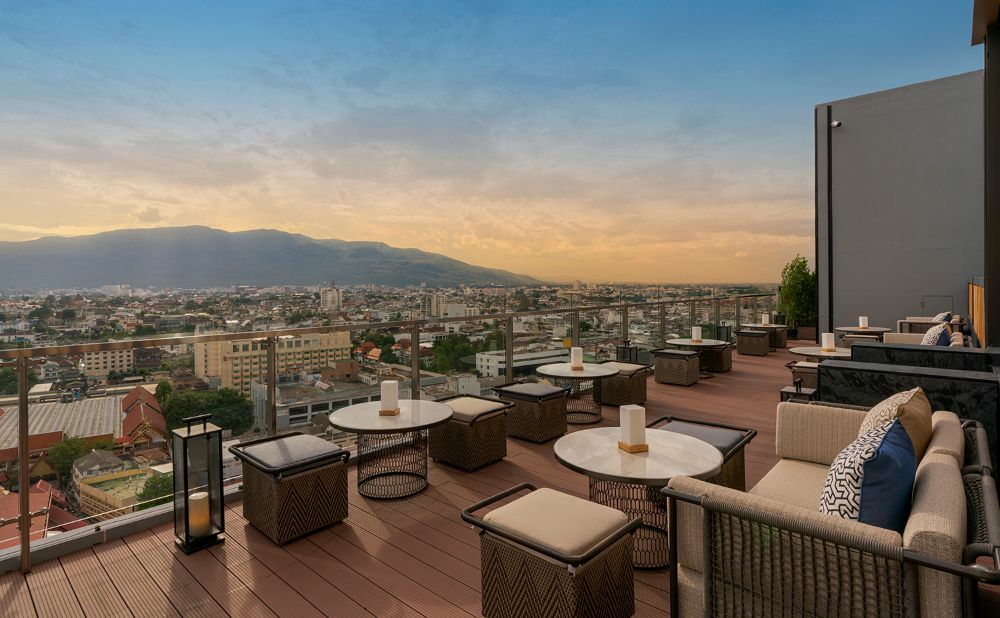
How Long to Stay
Most travellers spend three to five days in Chiang Mai. That’s enough to cover the highlights, but many visitors return to spend longer—especially those who enjoy slower travel. It’s especially popular with digital nomads and expats.
Read our latest articles about Chiang Mai
Continuing Your Journey
Chiang Mai makes a great base for northern Thailand, but it’s also well connected to other destinations. Popular next stops include Chiang Rai, Pai, or Lampang. There are also direct flights to Hua Hin.
Planning a Thai adventure? Join our friendly Facebook community Thailand Awaits: Trip Planning for Beginners. Get expert advice from locals and experienced travellers, ask your questions, and discover how to make the most of your journey through Thailand.
